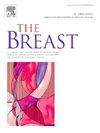Comparative survival outcomes of neoadjuvant and adjuvant therapy in patients with T1c, node-negative, triple-negative breast cancer: A population-based analysis
IF 5.7
2区 医学
Q1 OBSTETRICS & GYNECOLOGY
引用次数: 0
Abstract
Background
Ongoing discussions persist concerning the precedence of neoadjuvant therapy (NAT) relative to adjuvant therapy (AT) for patients with T1c, node-negative, triple-negative breast cancer (TNBC), and pertinent guidelines for these individuals are absent.
Methods
Women diagnosed with T1cN0M0-stage TNBC who received chemotherapy and surgery were selected from the Surveillance, Epidemiology and End Results database (2010–2020). To balance baseline characteristics and mitigate selection bias, propensity score matching (PSM) was used to create the NAT and AT cohorts. Kaplan–Meier (KM) analysis and Cox proportional hazards models were performed to assess the prognostic factors for overall survival (OS) and breast cancer–specific survival (BCSS). Logistic regression models were utilized to identify predictive factors for response to NAT.
Results
A total of 1033 patient pairs passed the PSM process, resulting in a well-balanced distribution. The KM analysis demonstrated that patients who received AT and those who underwent NAT had similar OS and BCSS, no matter before or after PSM. The multivariate Cox model showed that not achieving pathological complete response (non-pCR) following NAT, compared to AT, was associated with considerably worse OS (hazard ratio [HR], 2.207; 95 % confident intervaI [CI], 1.431–3.405; p < 0.001) and worse BCSS (HR, 2.184; 95 % CI, 1.348–3.537; p = 0.002). The logistic regression model revealed that being under 50 years old and having grade III or undifferentiated disease were independent predictors of pCR.
Conclusions
In patients with T1cN0M0-stage TNBC, both NAT and AT resulted in equivalent OS and BCSS. However, NAT precisely helped select patients with worse prognosis.
求助全文
约1分钟内获得全文
求助全文
来源期刊

Breast
医学-妇产科学
CiteScore
8.70
自引率
2.60%
发文量
165
审稿时长
59 days
期刊介绍:
The Breast is an international, multidisciplinary journal for researchers and clinicians, which focuses on translational and clinical research for the advancement of breast cancer prevention, diagnosis and treatment of all stages.
 求助内容:
求助内容: 应助结果提醒方式:
应助结果提醒方式:


